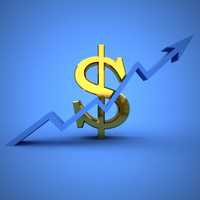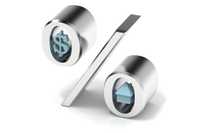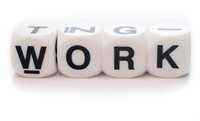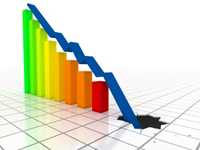| Home | About | Archives | RSS Feed |

@theMarket: Wash, Rinse and Repeat
 |
The dollars running, stocks are falling, bond prices are jumping while commodities are tanking. Welcome to another week in the financial markets. Expect more of the same in October.
As September, the worst month of the year for markets, comes to a close (next Tuesday) volatility appears to be rising. Stay strapped down, however, because we are not through the woods quite yet.
Historically, the first two weeks of October can get pretty hairy. Some of us might recall October of 1987 as an example.
So many of us have nudged up our exposure to the equity markets this year in pursuit of more and more gains that any sell-off scares the bejesus out of us. The 1-2 percent pullbacks, like investors experienced on Thursday, is a shock to our system. If you can't stand the heat, get out of the kitchen or so the slogan says.
Does that mean you should raise cash, sell your equity holdings and wait to jump back in after the correction? If you can do that, "you're a better man than I,Gunga Din."
In markets like this "volatility" is another name for stock market declines. Heading into October, therefore, don't be surprised if we have more of this same kind of action in the weeks ahead. The best advice I can give is to hang in there, ignore the paper losses and look ahead toward the end of the year.
I am convinced that whatever losses you may incur will be made up before January.
The U.S. dollar is still climbing after experiencing a decadelong period of underperformance. Usually, a rising dollar and a rising stock market can continue in tandem.
That makes sense because the engine that drives both markets is a growing economy. Like the Fed, I believe that is what is happening in this country.
However, that does not mean that all companies benefit from a strong dollar. Export stocks, many of which you will find among the S&P 500 Index can, and will be hurt by the fact that every gain in the dollar makes the products they sell more expensive to foreign buyers.
Non-U.S. sales account for roughly two thirds of total sales among companies in the S&P and 62 of the largest exporters generate more than 50 percent of their profits from exports. If the dollar continues to strengthen (and most currency analysts think it will) then the impact on the S&P 500 Index could be substantial. Why is that important?
Over the last several years the S&P 500 Index was the best performing equity index in the world. Prior to the financial crisis, other indexes (international, emerging markets, small or mid-caps, etc.) did better.
The S&P 500 Index also happens to be the index most professionals use as a benchmark of comparative performance. As such, it has been hard to beat an index that has performed so well. This could change.
In the future, savvy investors may re-focus their interest on other non-S&P stocks or indexes for better performance if the dollar's strength turns out to be a longer-term trend and I think it will. I suspect that some investors (myself included) are already making the switch.
In any case, chances are high that the market will put us through the wringer (wash, rinse and repeat) in the days ahead.
Bill Schmick is registered as an investment adviser representative with Berkshire Money Management. Bill’s forecasts and opinions are purely his own. None of the information presented here should be construed as an endorsement of BMM or a solicitation to become a client of BMM. Direct inquires to Bill at 1-888-232-6072 (toll free) or email him at Bill@afewdollarsmore.com.
@theMarket: Waiting on the Fed
 |
It should be clear to you by now that in the United States the Federal Reserve Bank is calling the shots in our financial markets. To a lesser extent this phenomena is happening all over the world. As such, the markets did little this week because the Fed doesn't meet again until Tuesday.
The S&P 500 Index has simply been trading in a tight range between 1,970 and 2,000. Although stocks are marking time, there has been some movement elsewhere in the financial spectrum. Take the dollar for example. The greenback is on a tear against most other currencies, but specifically the Yen and the Euro. As the dollar has strengthened gold, silver and oil have plummeted.
This is both good and bad news. The dollar's gains make our exports more expensive and imports cheaper. Since most commodities are priced in dollars, as the U.S. currency climbs, commodities become more expensive. Traders, always looking for a profitable arbitrage, sell gold or oil and buy dollars.
The decline in energy prices, however, gives an important boost to consumers, who buy an average of 400 gallons of fuel a year or more. A 40 cents decline at the pump translates into well over $120 in savings for everyone who drives. It is like getting a multibillion dollar tax cut that goes right into our pockets.
So what is behind this gain in the dollar?
Some say it is because of all of the geopolitical risk in the world today. ISIS, Ukraine, Russia, even Scottish secession are making the safe haven dollar an attractive alternative. Others argue it is not so much that the dollar is gaining ground but that the Euro and yen are getting weaker. That is due to the policies that are being implemented by their central banks.
It is true that Japan has been actively promoting a weaker currency, as they continue their own massive QE program. I have written at length on their efforts to break a double decade worth of stagflation. The job is not done, in my opinion. I expect that although the program is supposed to sunset in 2015, the Japanese central bank will extend its efforts beyond that date.
Over in Europe, as I wrote last week, the ECB has also announced further easing of interest rates and their own bond buying form of quantitative easing. More actions will be implemented if called for, according to their officials.
The result of this European and Japanese stimulus was to drive down their currencies as interest rates fall. Given that our own Fed is ending our QE program in October, investors are betting interest rates in the U.S. and the dollar offer a better deal going forward than elsewhere.
There is another more speculative element in the dollar's rise. As readers know, thanks to the Fed's overwhelming influence on the markets, a cottage industry of Fed Guessers has sprung up among the financial weeds. These pundits make a living trying to outguess the next central bank move. They parse every word, comma and period of the monthly Federal Open Market Committee (FOMC) statements trying to discern a change in stance.
This week, in anticipation of Tuesday's FOMC, the guess is that with the economy exhibiting gathering signs of strength, the Fed will be forced to move earlier in raising interest rates. Right now that move is not expected to happen until sometime in 2015. No one knows, but in a slow market where stocks are waiting for the Fed's next move, traders will believe just about anything.
As for me, I am ignoring all of these pundits. I do believe the U.S. dollar is on a long-term trajectory higher as are interest rates. That is a natural thing to happen when a country's economy is improving. The Fed says rates will remain low until 2015, and maybe after that. That's all I need to know. Stay invested and ignore the noise.
Bill Schmick is registered as an investment adviser representative with Berkshire Money Management. Bill’s forecasts and opinions are purely his own. None of the information presented here should be construed as an endorsement of BMM or a solicitation to become a client of BMM. Direct inquires to Bill at 1-888-232-6072 (toll free) or email him at Bill@afewdollarsmore.com.
@theMarket: What's Up With Bonds?
 |
At the beginning of the year, Wall Street was certain that interest rates were on their way up. Investors dumped all kinds of bonds anticipating that prices would plummet. Bond prices did the upset. Go figure.
The reversal caught just about everyone by surprise (including me). The thinking behind the bond call was straightforward. The Fed announced it was winding down its stimulus program. It also planned to begin raising interest rates sometime in 2015. Bond players, as they usually do, were expected to anticipate that move and begin to sell U.S. Treasury bonds this year. It all made total sense from an investment perspective. It was the end of a 30-year bull market in bonds so investors were advised to sell.
What few had foreseen in the first half was a slide in the European economy and a rise in geopolitical risk. Those conditions have effectively trumped any move by the Fed. Here's why.
Consider that America and its sovereign debt have long been considered a safe haven in time of global risk like today. So as ISIS makes inroads in the Middle East and Putin thumps his chest in Europe, it stands to reason that global investors would buy U.S. bonds but there is more at work here than that.
Bond investors do not operate in a vacuum, especially when it comes to sovereign debt. They compare (price shop) the perceived safety of one country and what its debt is yielding against other countries and buy the best deal. This week, Euro zone yields on sovereign debt have fallen out of bed due to slowing economic conditions. The bet is that things are getting so bad that their central bank will have to take further easing actions in the weeks ahead.
So let's say I'm a global bond investor. The 30-year U.S. Treasury bond is yielding a shade above 3 percent while the German 30-year is yielding 1.7 percent and the Japanese 40-year bond is offered at 1.8 percent. Why would I buy the German or Japanese paper when I could get more return in the U.S., which, by the way, is also a safer investment in a faster growing economy? Even at the present low rate of interest, American sovereign debt is a much better deal than offshore sovereigns.
It also explains why we are seeing both the U.S. stock and bond markets moving in the same direction. As interest rates drop and yields get lower and lower, the return from the stock market looks better and better versus what one can get in the bond market. Clearly, lower interest rates are bad for savers but great for stocks and equity investors. I know that I wouldn't be willing to settle for a 3 percent return over 30 years in a bond when I can get twice that in stocks, but some risk-adverse investors certainly would.
In this kind of environment, fears of what our own Fed may or may not do a year from now is definitely on the back burner. As we close out the last days of summer this Labor Day weekend, the stock markets are once again hitting new highs. Fewer and fewer strategists are looking for pull-backs of any magnitude. All seems right with our markets while the rest of the globe seems to be falling apart. Too much complacency, probably, but it is what it is.
Bill Schmick is registered as an investment adviser representative with Berkshire Money Management. Bill’s forecasts and opinions are purely his own. None of the information presented here should be construed as an endorsement of BMM or a solicitation to become a client of BMM. Direct inquires to Bill at 1-888-232-6072 (toll free) or email him at Bill@afewdollarsmore.com.
@theMarket: Labor on Their Mind
 |
It is that time of the year again when the world's central bankers gather together in Wyoming to sort out the economic conditions of the global economy. This year most bankers will be looking at labor growth, or lack thereof, and what to do about it.
In this country we have seen some surprising gains in the employment picture this year despite a less than stellar economic growth rate. Unemployment has dropped from above 7 percent to 6.2 percent in less than a year. Fed officials are somewhat pleasantly puzzled by that performance. FOMC members are watching things like how many part-time jobs are being filled versus full-time positions. They are also looking for hints of wage growth and under what circumstances it is rising. Some members have their fingers on the interest rate trigger advocating a raise sooner than later, while others urge a wait-and-see attitude.
Janet Yellen, our Federal Reserve chairwoman, kicked off the Jackson Hole, Wyo., event, with an address to the central bankers and the press. She urged a pragmatic approach to policy when dealing with the labor markets. Using the unemployment rate alone to guide monetary policy is too simplistic, she argued. Although the jobless rate has declined, there are still millions of Americans who can't find jobs or have only been able to land part-time work with no benefits. Even more have given up looking for work, discouraged after years of trying to find a job.
Then there is the trend toward retirement by this nation's Baby Boomers. Two hundred and twenty-five thousand Americans turn 65 every month. In 2010, for example, only 10 percent of that demographic age group was retired. Today, that number has reached 17 percent and is climbing. Nearly 25 percent of all Americans born between 1946-1964 are planning on retiring in the years ahead. How does that impact our idea of full employment when calculating what are structural unemployment (essentially permanent) issues versus cyclical issues?
Yellen presents a good argument. It is a fact that the unemployment rate does not account for part-time workers, discouraged workers, retiring workers and shifts in the nature of the economy. If we have jobs that are going unfilled because the nation lacks workers with sufficient skills and education to do the job, then that is a structural issue. The same is true when dealing with the growing number of Baby Boomer retirees.
No amount of interest rate declines and stimulus money is going to dent a structural issue. In which case, it would be time to raise interest rates early and sooner than the markets expect. Anything the Fed says that implies that we are approaching an unemployment rate that is bumping up against "structural" problems then (as far as the markets are concerned), look out below.
On the other hand, if keeping rates lower for longer would generate more economic growth and therefore more jobs (cyclical employment) then investors would like that. It would mean the markets still have a green light to make new highs and continue the rally based on a zero interest rate policy. Therefore investors were content to hear that the Fed will be taking a "pragmatic" approach to the labor markets.
As long as easy money is on the table, the markets will continue to go up. It also means that the cottage industry of Fed watchers that have sprung up over the past five years will continue to try and out guess what the Fed will do next. Of course the Fed has no idea what they will do next (the pragmatic approach) but we will continue to read and listen to the pundits anyway.
Bill Schmick is registered as an investment adviser representative with Berkshire Money Management. Bill’s forecasts and opinions are purely his own. None of the information presented here should be construed as an endorsement of BMM or a solicitation to become a client of BMM. Direct inquires to Bill at 1-888-232-6072 (toll free) or email him at Bill@afewdollarsmore.com.
@theMarket: Geopolitical Risk Trumps Economic Growth
 |
The front page of most newspapers on Friday featured at least three hot spots around the world that has investors worried. None of them may be anything to worry about over the long-term, but over the next few weeks they have the potential to drive the stock market lower.
You may ask, why now? After all, the situation in Ukraine has been going on all year. Turmoil in the Gaza Strip has been a reason for concern for far longer. The Iraqi Shiite/Sunni fighting has plagued us for months. About the only new threat that has arisen over the past two weeks has been the occurrence of a number of cases of Ebola Virus. So why have investors suddenly decided to embrace these concerns as a reason to sell stocks?
Investors need a reason to sell and so does the media. Simply selling because the market's price levels have gone too far or because we haven’t had a sell-off in a while are simply insufficient reason for most of us, we need an excuse to sell and now we have them.
Don't get me wrong; the world is a mess right now. As I wrote yesterday in my column "Beware the Russian Bear," the situation in the Ukraine is fraught with danger. The escalating embargos that are flying around between the EU, the U.S. and Russia certainly have the potential to hurt global growth. President Obama's decision to authorize air strikes in Iraq is clearly a new development, while financial problems among the Portuguese banks have soured investors on
While geopolitical risks move to the front burner, the economy, unemployment, wage growth and what the Fed is going to do about it have receded to the back burner. Interest rates continue to drop, despite the end to quantitative easing in October. The employment gains are accelerating, forecasts are now around a 3 percent growth rate for U.S. GDP in the third quarter while corporate earnings, for the most part, appear to be growing even faster than expected.
But, remember, the stock market and the economy are not the same thing and therein lies an advantage to profit. Right now (and possibly over the next month or two), the stock market will remain volatile with a downside bias. I would expect the S&P 500 Index to re-test its 200
day moving average (DMA) which is at 1,861 or so. That’s another 2 percent-plus down move from where we are now. It may take several days or even weeks to get there.
Usually, the market will bounce at that point. Nothing says that bounce will be sustainable and in most cases will result in disappointment and another re-test of the 200 DMA.
What happens next will depend on how investors handle the decline. Usually, declines end in a bout of panic selling; something we have not seen yet. We could easily go lower than the 200.
Some perma-bears are calling for a 20% correction depending on who you read. Right now, I would say those forecasts are a bit extreme. Maybe half that amount is where I stand.
But remember folks, we are talking about paper losses. The growing economy will provide a cushion of support for stocks. This could actually turn out to be a great buying opportunity for investors in the weeks ahead. At the beginning of the year, I forecasted a 5-6 percent gain in the S&P 500 Index for the year. I don't see any reason to change it. I believe next year will offer much better gains, so keep your powder dry and wait for lower prices. You won't be disappointed.
Bill Schmick is registered as an investment adviser representative with Berkshire Money Management. Bill’s forecasts and opinions are purely his own. None of the information presented here should be construed as an endorsement of BMM or a solicitation to become a client of BMM. Direct inquires to Bill at 1-888-232-6072 (toll free) or email him at Bill@afewdollarsmore.com.

